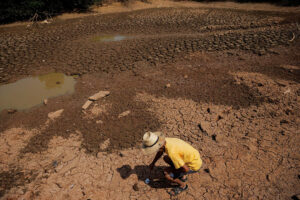THE effects of El Niño are likely to worsen in the next few years, causing more damage to the livelihoods of farmers and fisherfolk, Greenpeace Philippines said.
“We are seeing a trend that El Niño is getting worse…there’s a worrying trend in the past few years that its effects are increasing,” Jefferson M. Chua, a campaigner for Greenpeace Philippines told BusinessWorld.
He added that with human-induced or anthropogenic climate change causing temperatures to rise, the effects of El Niño are magnified.
The weather phenomenon has started weakening but will persist until May, according to the government weather service, known as PAGASA (Philippine Atmospheric, Geophysical and Astronomical Services Administration).
Its effects, however, are expected to last until August, with rains brought about by La Niña taking over.
PAGASA said there is a 62% probability that La Niña will develop between June and August.
“What is happening now is that there are a lot of farmers and fisherfolk being affected, and the social safety mechanisms implemented to not make the impact too hard for them are failing,” Mr. Chua said.
He said that the government should implement proactive policies to support “the most vulnerable in society.”
“The problem is that (the government) has been reactive… the key feature with our systems here is that we can only access emergency funds when a calamity is declared,” he added.
Agricultural damage caused by El Niño has been reckoned at P2.63 billion, affecting 54,203 farmers and 53,879 hectares of farmland, according to a Department of Agriculture (DA) bulletin.
Rice was the most affected crop with 72,733 metric tons (MT) of damage, equivalent to P1.7 billion or about 65% of all agricultural losses.
This was followed by corn with 35,885 MT of damage, valued at P591.74 million.
“What complicates matters is that kahit walang El Niño (even without El Niño) the effects of climate change will invariably affect food security either way,” he said.
PAGASA has reported that 19 provinces in Luzon, 14 in the Visayas, and eight in Mindanao are experiencing meteorological drought; 23 provinces are undergoing dry spells; and eight have reported dry conditions.
In a report last week, the National Disaster Risk Reduction and Management Council said that 18 local government units have declared states of calamity due to El Niño. — Adrian H. Halili
